SOC as a Service: Is It Better Than Building Your Own SOC?
Explore the pros and cons of SOC as a Service (SOCaaS) versus building your own in-house Security Operations Center. Learn which approach best fits your organization's security needs, budget, and scalability goals.
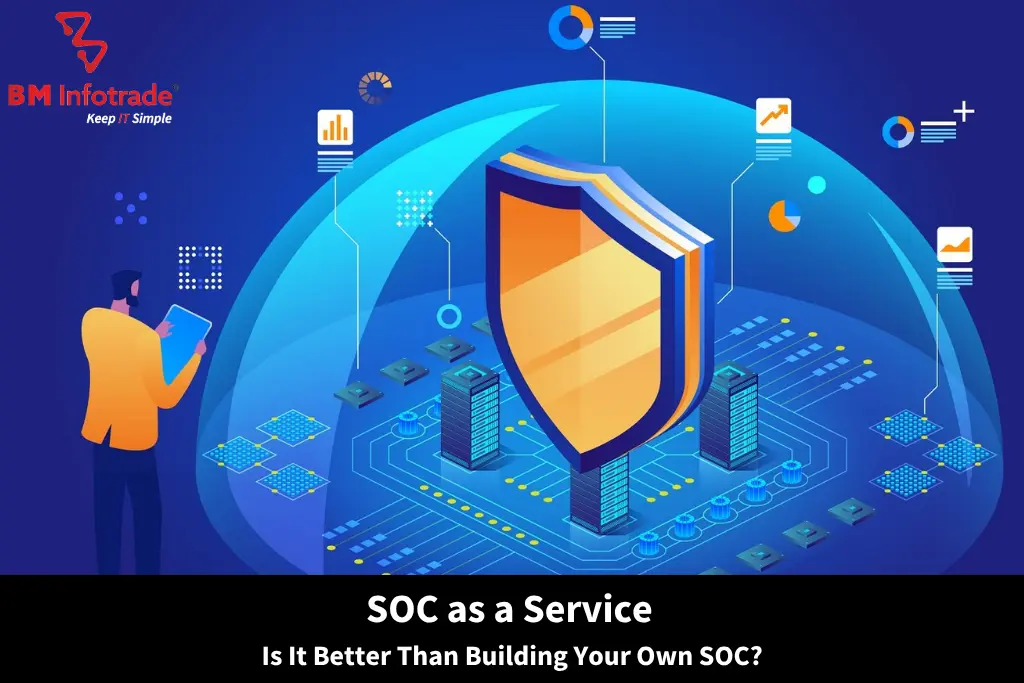
SOC as a Service: Is It Better Than Building Your Own SOC?
Table of Contents
Today’s quick changes in technology mean that cybersecurity is very important to businesses, both large and small. Because cyber attacks are getting more advanced, businesses have to figure out the best way to defend their digital assets. A company must decide whether to create an in-house Security Operations Center (SOC) or outsource this security function through SOC as a Service (SOCaaS). We try to help businesses at BM Infotrade Pvt. Ltd. choose the right path for their business. We address the build vs buy SOC question on this blog, discussing the pros and cons, different costs, and issues with compliance, so you can choose your approach.
Understanding SOC as a Service
SOC as a Service (SOCaaS) involves paying for a cybersecurity service where a security team oversees the customer’s systems remotely from the cloud. It gives you services such as watching for threats in real time, responding to incidents, detecting them, and managing compliance, all without having to build your infrastructure. Instead of requiring lots of hardware, software, and skilled people, SOCaaS uses Security Information and Event Management (SIEM) and similar tools to safeguard users around the clock. Being able to outsource cybersecurity helps many SMEs get the needed protection and expertise at a much lower cost.
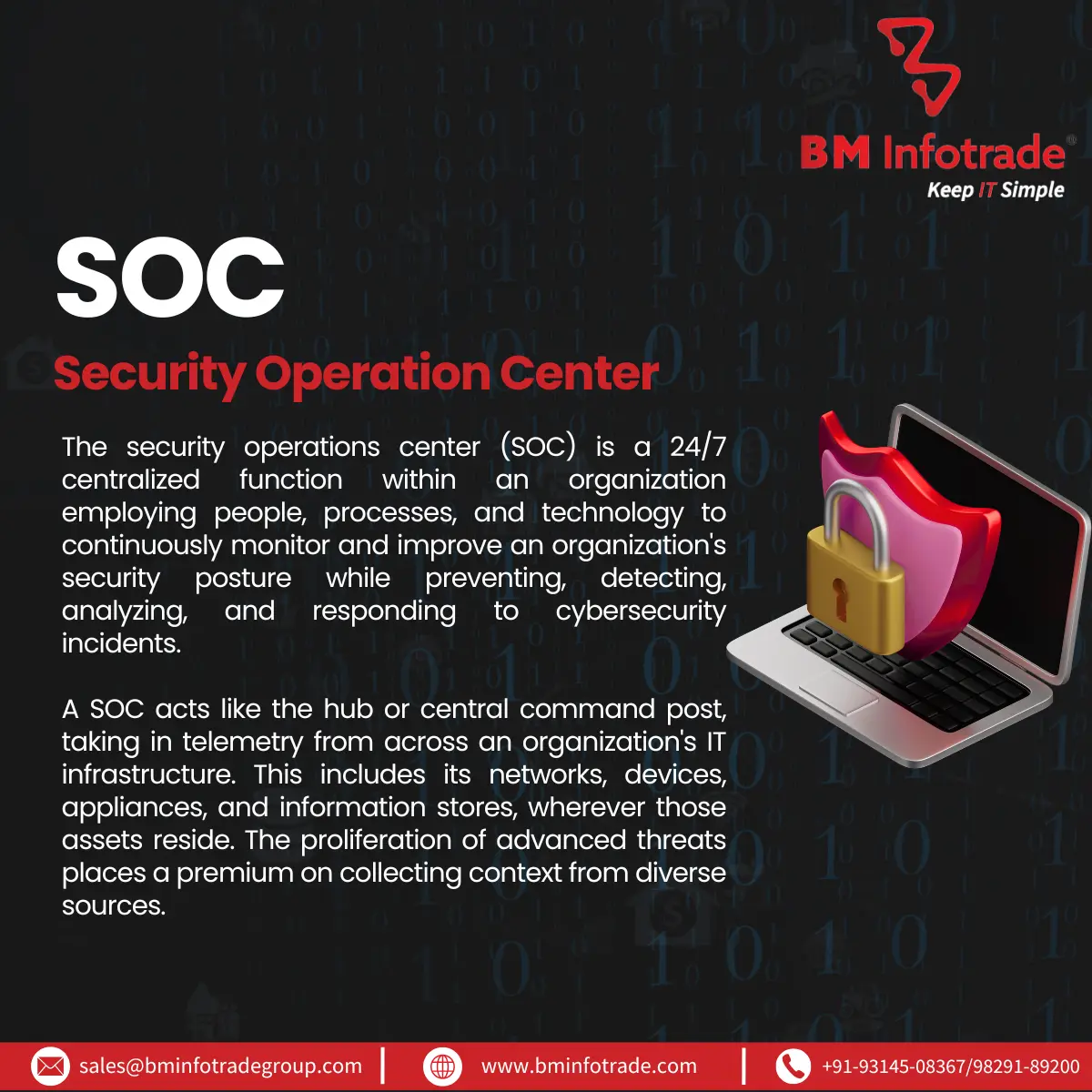
The Cost of Building a SOC
Building a Security Operations Center within an organization is both pricey and requires a lot of effort. The setup of a SOC costs money for IT infrastructure and licenses, with SIEM solutions often requiring payments of hundreds of thousands of dollars in advance. It is also very hard to both bring in and keep talented cybersecurity professionals because of the worldwide lack of professional expertise. The industry reports suggest it takes 12 or more cybersecurity professionals to maintain an organization 24 hours a day, and salaries for experienced analysts and CISOs are high. Sources of budget growth also include recurring expenses for training, updating software, and maintenance. For lots of companies, setting up an in-house SOC requires a lot of resources and distracts from main business tasks.
SOCaaS Benefits: Why Outsource?
Having a SOC as a Service is more appealing than building one from scratch for many reasons. Listed below are the main advantages of SOCaaS services :
- SOCaaS can lower your expenses because you switch major payments for hardware and staffing into easier monthly fees. With this solution, companies get top-level security without needing to invest lots from the beginning.
- With managed SOC services, you can rely on experts who are trained in looking for dangers, responding to security incidents, and hunting threats online. You won’t have to employ and train staff yourself for these tasks.
- If a business expands, the SOCaaS solution can still meet increased security requirements with no extra creation of IT infrastructure or hiring of additional staff.
- Cyber threats never stop, so outsourced cybersecurity works all day, every day to keep an organization secure.
- Application of Advanced Tech: With the help of AI and threat intelligence, these providers can spot and answer to dangers faster than most in-house teams manage to do.
Since they do not have the resources to run their own SOC, SMEs find SOCaaS to be especially attractive.
Also Read:- Best SIEM Tools for Mid-Sized Indian Enterprises: 2025 Comparison
In-House SOC Challenges
Although an in-house Security Operations Center gives more flexibility, it also creates added problems. In-house SOC challenges include:
- Running a Data Center isn’t cheap, because extra costs for staff, training, and updates to technology can put pressure on the budget.
- A worldwide shortage of talent happens in cybersecurity which makes it tough to hire and retain skilled analysts. It is made harder because many employees leave the company quickly.
- It can be difficult for internal teams to oversee a SOC since successfully using multiple tools, ensuring compliance and staying ahead of new threats can be overwhelming.
- Too Many Alarms: With so many simple alarms, in-house teams find it breaks their spirit and sometimes overlooks greater risks.
These challenges highlight why many organizations find outsourced cybersecurity a more practical solution.
SOC Compliance Standards and SOCaaS
Any business dealing with sensitive information needs to comply with laws like GDPR, HIPAA, PCI DSS and ISO 27001. Meeting SOC compliance standards means security is managed following the law, keeping organizations safe from penalties and damage to their reputation. Having compliance services as part of SOC as a Service means you are ready to comply with standards such as SOC 2 and PCI DSS. Even so, organizations must be confident that their SOCaaS vendor fully respects privacy laws and gives clear reporting on services. Controlling compliance is easier for in-house SOCs, but managing them takes up many resources, while managed SOCs help with compliance and are supported by experts.
Also Read:- How to Set Up a 24/7 SOC Without Hiring a Full Security Team
Best SOC Providers 2025: Choosing the Right Partner
Finding a suitable SOC as a Service provider helps ensure you get the greatest security and value. The best SOC providers 2025 offer a combination of advanced technology, experienced analysts, and robust compliance support.
Things to look for during your assessment of providers include:
- Make sure you find employees with a reputation and skills that match the requirements of your industry.
- Only consider vendors that can handle various services such as threat searches, dealing with emergencies, and compliance matters.
- The provider needs to fit in easily with your existing security tools and appliances.
- Group members should receive full and precise updates to help maintain trust in the group.
At our company, we encourage you to research well and ask for demos to see if the provider fits. CrowdStrike, Palo Alto Networks, and Microsoft Security are considered strong in SOCaaS, still, your business should choose the best solution for itself.
Build vs Buy SOC: Making the Right Choice
The option to build or buy a SOC will be based on your organization’s scale, how much money is available, and the security targets you have. A Security Operations Center inside the organization is suggested for large companies, those with an extensive resource base, total control needs, and customization preferences. Small to medium businesses often choose SOC as a Service because it costs less, adjusts to changing needs, and functions well. By using outsourcing, organizations can concentrate on their main duties while leaving cybersecurity to professionals at the SOC.
Conclusion
Many organizations find SOC as a Service to be a good choice in the discussion about build vs buy. With things like price reductions, extra knowledge, and the ability to grow, SOCaaS fixes the issues that in-house SOC teams face with high prices, not enough skilled staff, and added complexity. A SOC provider in 2025 can support businesses by implementing top-level security and SOC compliance without the complexities of first building their security operations. We believe at BM Info Trade Pvt. Ltd. that outsourcing cybersecurity allows businesses to respond quickly and maintain security against new threats. Assess what you want, compare the expenses, and settle on a security product suitable for your long-term protection.
FAQs
1. What is SOC as a Service?
In a SOC as a Service model, a third party handles your cybersecurity by performing duties such as spotting threats and reacting to incidents, all on the cloud.
2. What are the main SOCaaS benefits?
Those using SOCaaS can enjoy cut costs, top experts in analysis, continuous round-the-clock monitoring, flexible scaling, and reliable detection of threats.
3. What are the in-house SOC challenges?
Difficulties within an in-house SOC involve high finance, a lack of skilled professionals, tired analysts, and the intense work of managing threats and rules.
4. How do SOC compliance standards impact businesses?
Complying with SOC standards keeps your company in line with rules such as GDPR and PCI DSS, making digital data security better and avoiding tough penalties.
5. How do I choose the best SOC providers in 2025?
Choose a top SOC provider in 2025 by checking their experience, the services they offer, how well they can integrate and how well they support compliance for your business needs.


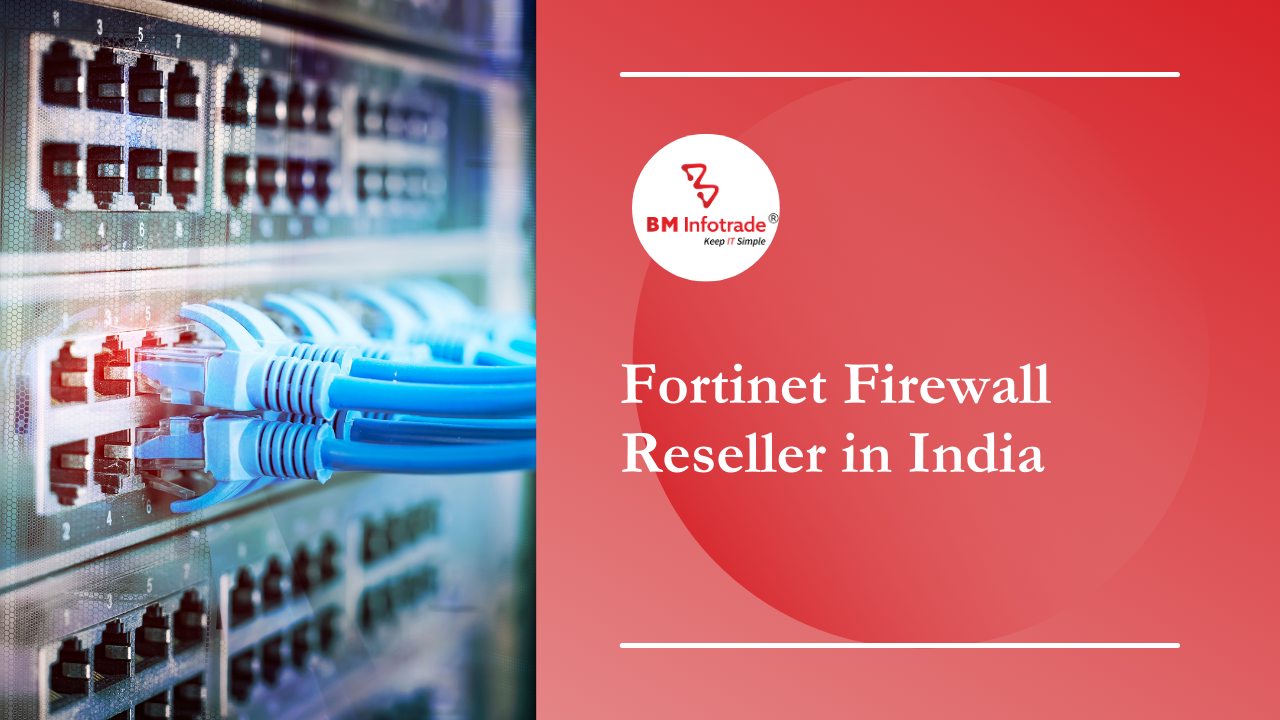
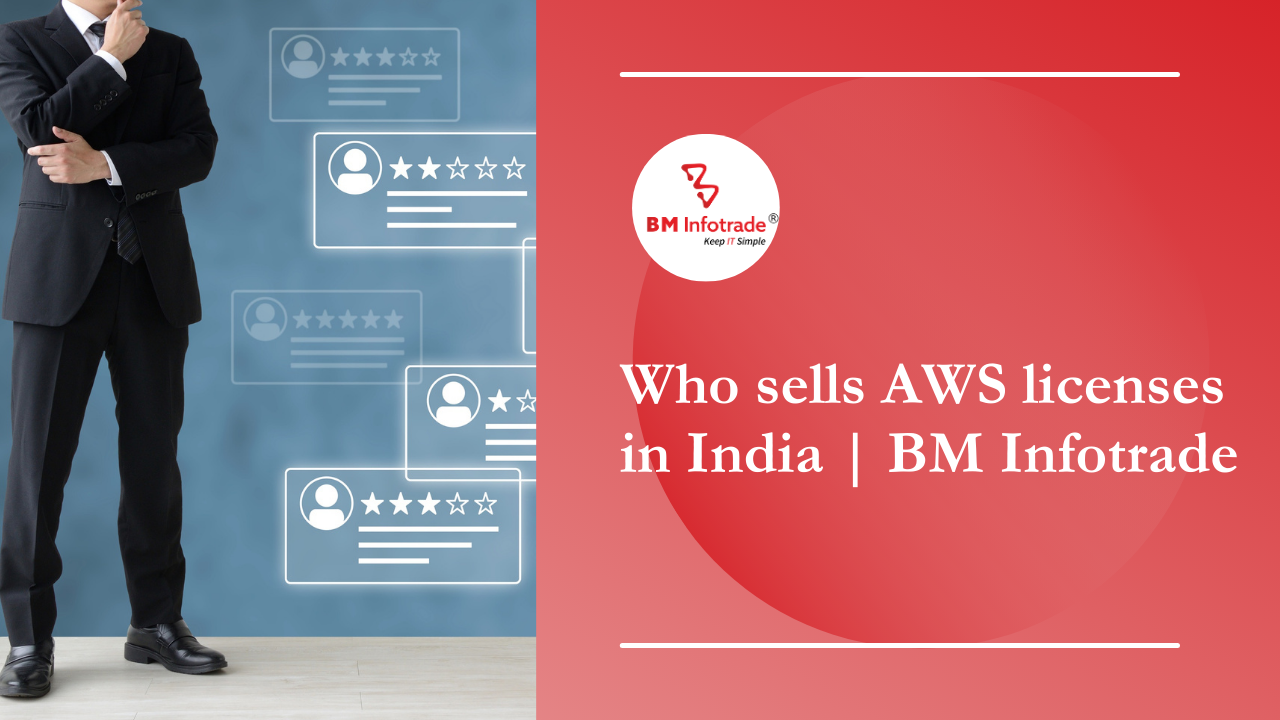
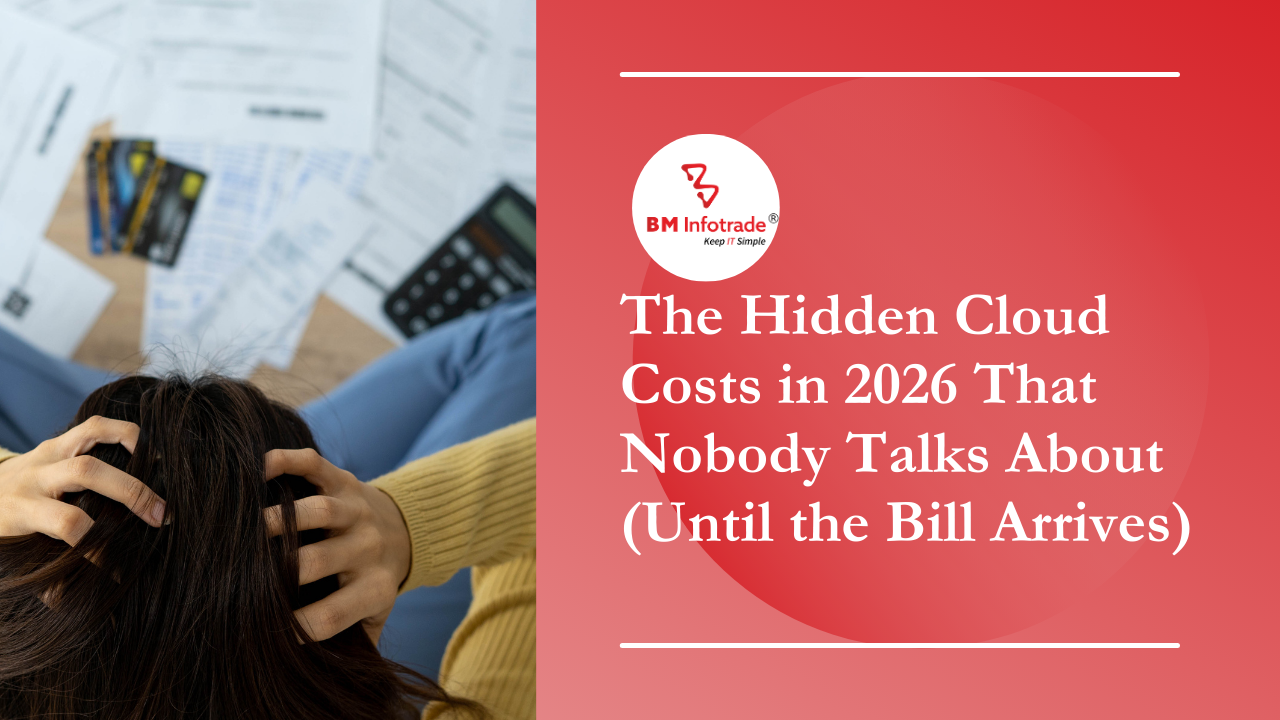
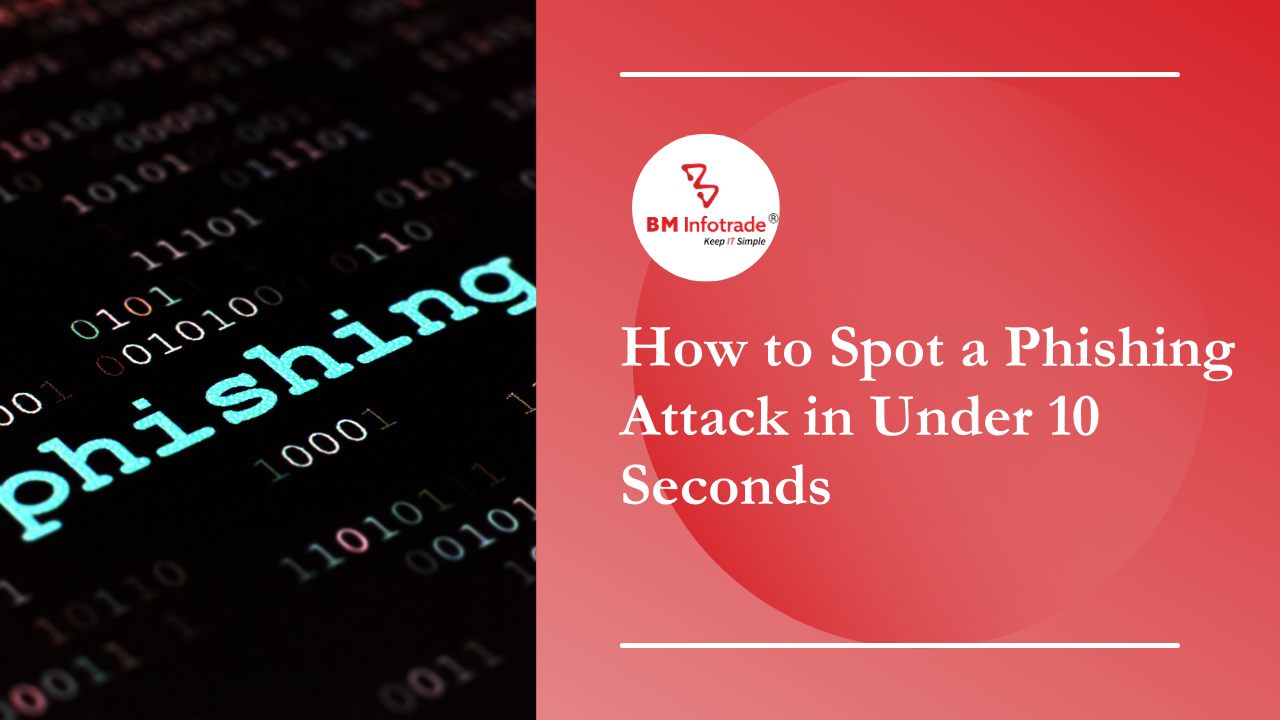
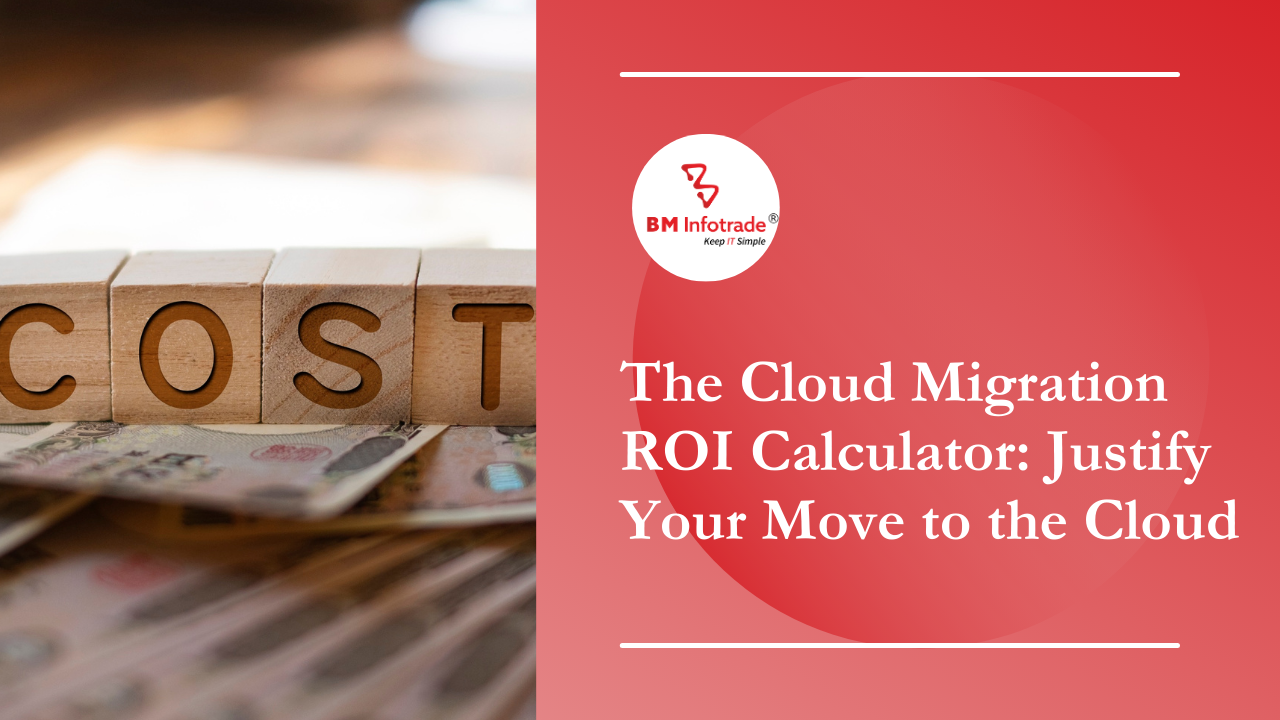
Anshul Goyal
Group BDM at B M Infotrade | 11+ years Experience | Business Consultancy | Providing solutions in Cyber Security, Data Analytics, Cloud Computing, Digitization, Data and AI | IT Sales Leader